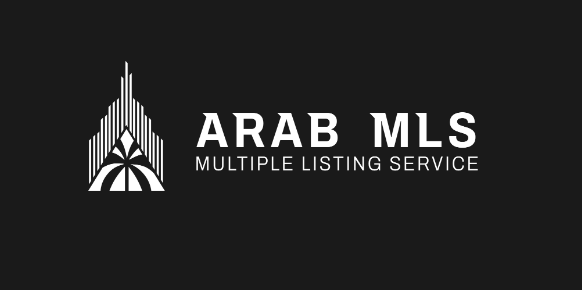Real estate is an ever-evolving industry. For new agents and brokers entering this field, understanding both the theory and the practical skills required is essential to their success. One of the most critical tools in a real estate professional’s arsenal is the Multiple Listing Service (MLS), a comprehensive database of property listings used to find, list, and manage real estate transactions. However, mastering MLS systems requires hands-on experience that traditional classrooms often fail to provide.
To address this, MLS-based simulation tools have emerged as an innovative solution. These tools provide students with a real-world, interactive environment to practice MLS-related skills without the risks involved in live transactions. This article explores MLS-based simulation tools, why they are important in real estate education, how they work, their advantages, examples of their implementation, challenges, and future trends.
Understanding MLS and Its Role in Real Estate
Before diving into simulations, it’s important to understand what MLS is and why it matters.
The Multiple Listing Service (MLS) is a digital platform used by real estate professionals to share detailed property information with other agents and brokers. It serves as the primary database where listings are posted, searched, and managed. Agents use MLS to:
- Find properties that meet client criteria.
- Market listings to a wider audience.
- Analyze market trends and pricing.
- Manage transactions and client interactions.
Given its central role, proficiency with MLS is a must-have skill for any real estate professional.
What Are MLS-Based Simulation Tools?
MLS-based simulation tools are educational platforms or software designed to mimic the functionality of real MLS systems. They provide users — mainly students and trainees — with a safe, controlled environment to practice and master MLS skills. These tools replicate the features of MLS platforms such as property searches, filtering options, listing input and editing, client matching, and transaction management.
By simulating MLS operations, these tools help learners bridge the gap between theoretical knowledge and real-world practice. Instead of simply reading about how MLS works, students get to experience the actual process of searching for properties, preparing market analyses, managing listings, and handling client requests.
Why Are MLS-Based Simulation Tools Crucial for Real Estate Education?
1. Practical, Hands-On Experience
MLS systems have many features and options that can be overwhelming at first. Simulations allow learners to interact with MLS data, practice searches, and understand how to use filters effectively. This hands-on experience is invaluable because it builds confidence and familiarity before students enter the field.
2. Safe Learning Environment
Using real MLS systems with live data can be risky for new learners. Mistakes in listing entries or client communication can lead to real-world problems. Simulation tools offer a risk-free space where students can learn from errors without affecting actual listings or clients.
3. Better Understanding of Market Dynamics
MLS data includes details on pricing, property types, locations, and availability. By working with real or realistic data in simulations, students gain insights into how the market operates. They learn how various factors influence supply and demand, and how to advise clients accordingly.
4. Enhanced Preparation for MLS Certification and Licensing
Many states and regions require MLS certification as part of real estate licensing. Simulation tools replicate the environment and tasks candidates will face during certification exams, helping them prepare more effectively.
5. Flexible Learning Options
With simulations accessible online, students can practice MLS skills anytime, anywhere. This flexibility supports remote learning and accommodates different learning paces.
How MLS-Based Simulation Tools Work
Data Input
Simulation tools either use real MLS data that has been scrubbed of sensitive information or generate synthetic data sets that mimic real market conditions. Some platforms have partnerships with MLS providers to keep data updated.
User Interface
The simulation interface closely resembles real MLS software, including search bars, filter options (price, location, size, etc.), map views, and detailed listing pages. This familiar layout helps learners transition easily to actual MLS systems later.
Tasks and Exercises
Simulations typically include tasks such as:
- Searching for properties based on detailed client criteria.
- Sorting and comparing listings.
- Preparing market reports and listing presentations.
- Inputting new listings and managing their status.
- Simulating client interactions, such as sending listings or scheduling viewings.
- Tracking transactions and offers through to closing.
Feedback and Assessment
Most MLS simulations have built-in assessments to evaluate learner performance. These may include quizzes on MLS features, scoring for search accuracy, or instructor-led reviews of simulated transactions. Feedback helps students identify strengths and areas for improvement.

Examples of MLS-Based Simulation Tools in Use
MLS Training Sandboxes
Some MLS providers offer training sandboxes — replica environments of their live MLS platforms. These allow agents and students to practice MLS functionalities without affecting real data. For example, the California Regional MLS (CRMLS) provides a training site where users can log in and practice entering listings and performing searches.
Third-Party Simulation Software
Several real estate education companies develop MLS simulation software tailored for classroom or online use. These tools often come with lesson plans, guided tutorials, and instructor dashboards. Examples include simulators integrated into platforms like Real Estate Express or Kaplan Real Estate Education.
University and College Integration
Some academic institutions with real estate programs incorporate MLS simulations into their curricula. Students use these tools alongside traditional coursework to gain practical skills that prepare them for internships and job placements.
Certification Prep Courses
Many licensing exam prep courses include MLS simulation modules. These help candidates get familiar with MLS software interfaces and workflows, increasing their chances of passing the exam on the first try.
Benefits of MLS-Based Simulation Tools for Students and Educators
For Students
- Build Confidence: Practicing in a simulated environment helps reduce anxiety about using MLS systems.
- Understand Real-World Workflows: Students learn not just the “what” but the “how” of MLS usage in daily real estate operations.
- Improve Decision-Making: Simulations encourage critical thinking by having students evaluate listings and market data before making recommendations.
- Increase Engagement: Interactive learning keeps students interested and motivated compared to passive lectures.
For Educators
- Track Student Progress: Simulation platforms often include analytics tools that let instructors monitor student activity and performance.
- Customize Learning: Teachers can tailor exercises to match student skill levels and course goals.
- Provide Real-Time Feedback: Instructors can intervene promptly to correct misunderstandings.
- Enhance Course Value: Offering hands-on MLS training differentiates courses and attracts more students.
Challenges and Considerations
While MLS-based simulation tools offer many advantages, there are some challenges to keep in mind:
Data Licensing and Access
Real MLS data is proprietary and tightly controlled by MLS organizations. Educational programs must negotiate data access agreements, which can be costly and restrictive.
Development and Maintenance Costs
Building realistic, user-friendly MLS simulators requires investment in software development and ongoing updates to reflect MLS changes.
Technical Literacy
Both students and instructors may require training to effectively use simulation tools, particularly for users not familiar with technology.
Data Currency and Realism
To be effective, simulation data must be current or closely mimic real market conditions. Outdated or unrealistic data can reduce learning effectiveness.
Balancing Simulation and Theory
Simulations should complement, not replace, traditional teaching methods. A solid understanding of real estate principles is essential for meaningful simulation use.
Future Trends in MLS-Based Simulation Tools
Artificial Intelligence (AI) and Machine Learning
AI can enhance simulations by creating adaptive scenarios that respond to learner decisions. For example, if a student struggles with pricing analysis, the system could offer additional practice or tutorials.
Virtual Reality (VR) and Augmented Reality (AR)
VR and AR can take MLS simulation to the next level by allowing virtual property tours, interactive client meetings, and immersive transaction role-plays.
Integrated Platforms
Future tools might combine MLS simulations with Customer Relationship Management (CRM) and transaction management systems for end-to-end training.
Collaborative Simulations
Group-based simulations could let students work together on deals, reflecting real brokerage teamwork and encouraging collaboration skills.
Mobile Accessibility
Increasing mobile device use will push simulation platforms to offer responsive, app-based access for learning on the go.
Practical Tips for Using MLS-Based Simulation Tools Effectively
- Set Clear Learning Objectives: Define what MLS skills students should master by the course end.
- Combine with Traditional Teaching: Use lectures and readings to explain concepts before simulation practice.
- Encourage Repetition: Allow students to repeat tasks to build proficiency.
- Provide Realistic Scenarios: Use data and exercises that reflect local market conditions.
- Offer Timely Feedback: Review student progress frequently and provide constructive guidance.
- Use Peer Learning: Encourage students to share insights and problem-solve together during simulations.
Conclusion
MLS-based simulation tools represent a vital evolution in real estate education. By providing hands-on, interactive practice in environments that closely replicate real MLS platforms, these tools prepare students more effectively for their professional careers. Learners gain practical skills, confidence, and market understanding that traditional classroom methods alone cannot deliver.
As technology advances and the real estate industry becomes more data-driven, the importance of MLS simulations will only grow. Educational institutions, licensing bodies, and brokerages that adopt these tools stand to offer superior training and produce better-prepared professionals.
Whether you are a student aiming to master MLS systems, an educator designing a real estate course, or a brokerage investing in agent training, MLS-based simulation tools are a powerful resource worth exploring. They bring theory to life, transforming learning into an engaging, practical experience that truly prepares you for the realities of the real estate market.













